4-15-23
The burial linen that was left in Jesus' empty tomb (the Shroud), may have made its way to Edessa (modern day Turkey) shortly after Jesus’ death (c. 33 AD), as a gift to King Abgar of Edessa from Thaddeus, one of Jesus' disciples. Many scholars speculate that the burial linen, was called The Image of Edessa, a holy relic with the image of Jesus' face imprinted. This holy relic was revered in Edessa for centuries until it was taken from Edessa to Constantinople in 944 AD where it was housed in the Great Palace of Constantinople.
By the 12th century, Constantinople was a repository for many early Christian relics including the "linen sheets in which Christ's body was wrapped in the tomb" (the Shroud). Was the Image of Edessa (known to have been moved to Constantinople in 944 AD) mistaken for the "linen sheets in which Christ's body was wrapped in the tomb" by many historians of the early Christian era, or were the burial linens a separate relic?
In 1204 the Crusaders sacked Constantinople and carried off to Western Europe many holy relics from Constantinople. After the sacking of Constantinople, the Image of Edessa disappeared from known history and the linen burial sheets with Jesus' full body image (the Shroud) appeared.
Lirey, France 1355
For many historians and scholars the real provenance/history of the Shroud of Turin begins in 1355 in Lirey, a small village in northern France. After the sacking of Constantinople in 1204, one of the relics said to be carried off by the Crusaders to Western Europe was the burial linen of Jesus (the Shroud). The Shroud appeared in Lirey, France 150 years after the sacking of Constantinople. In Lirey, the Shroud was said to be owned by a French nobleman and knight named Geoffrey (Geoffroi) de Charny. There is no record of how Geoffrey de Charny acquired the Shroud.
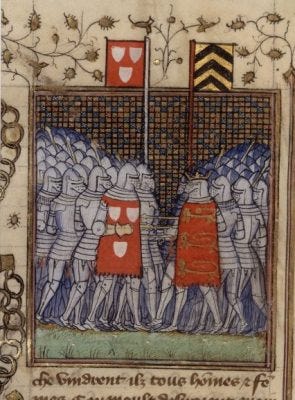
There are a few theories of how the Shroud came to Lirey, France and became the property of Geoffrey de Charny:
Prize for Valor
De Charny of Lirey received the Shroud from French King Philip VI (reign 1328-1350) as a recompense for his valor as a French knight. He received the Shroud prior to 1350 the year of King Philip’s death. It is speculated King Philip received the Shroud from the relic collection of French King Louis XI, who had received early Christian relics from Latin emperor, Baudouin II de Courtenay, thirty years after the sacking of Constantinople.
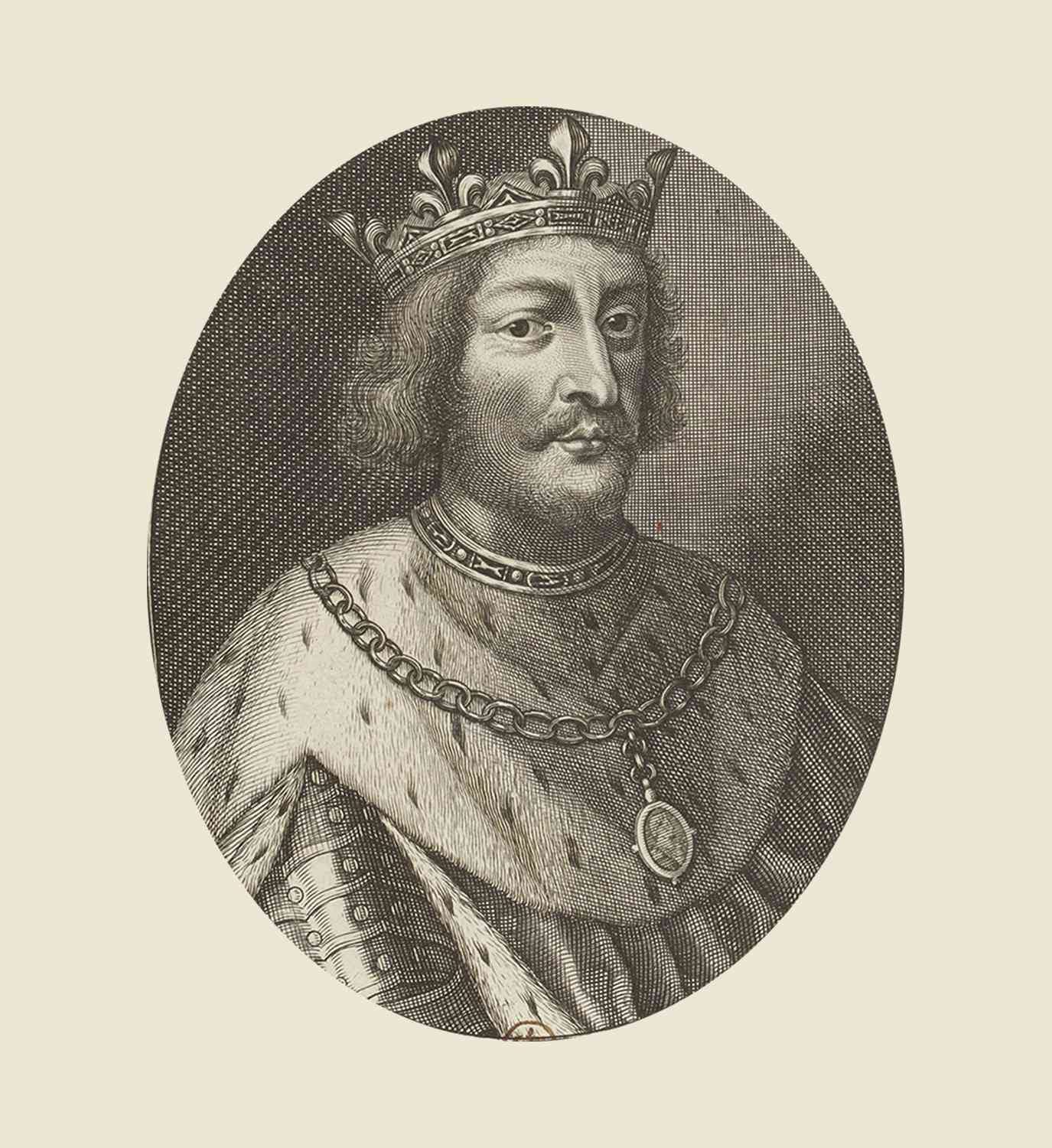
Knights Templar
De Charny of Lirey received the Shroud from a possible relative with the same name of Geoffrey de Charny (a Templar Knight).
The Knights Templar were a Catholic military order with allegiance to the Pope, they were active between c. 1119-1321. By the time of the conquest of Constantinople during the Fourth Crusade, the Knights Templar were large (15,000-20,000 members) and wealthy. They established financial networks across Christendom.
After 1291, The Knights Templar were accused of heresy and engaging in corrupt and sexually immoral secret ceremonies by King Philip IV of France. The king pressured Pope Clement V to dissolve the Knights Templar, which he did in 1307.
In 2003, a researcher in the Vatican Secret Archives , named Barbara Frale, rediscovered records of the Knights Templar trials which show that the Shroud had been in the possession of the order before the Templars were suppressed by the Pope in 1307.
Frale reported that a trial document recounts the testimony of Arnaut Sabbatier, a young Frenchman who entered the order in 1287. He testified that as part of his initiation he was taken to “a secret place to which only the brothers of the Temple had access.” He was shown “a long linen cloth on which was impressed the figure of a man” and instructed to venerate the image by kissing its feet three times.
Frale said that the Knights Templar had been accused of worshiping idols, in particular a “bearded figure.”
Frale theorizes that after the sacking of Constantinople the Knights Templar took possession of the Shroud to rescue it from heretical groups. In 1314 the last head of the Knights Templar, Jacques de Molay and another Templar Knight named Geoffrey de Charny, were burned at the stake on order of the Pope. The Shroud was then passed down to Geoffrey de Charny’s descendants of Lirey, France.
Besancon Theory
Some scholars have theorized that Burgundian nobleman and crusader Othon de la Roche obtained Constantinople’s shroud in the 1204 conquest of the city. He sent the Shroud to his father, Ponce de la Roche, who gave it to Amedeus de Tramelai, Archbishop of Besancon, who placed it in the Cathedral of St. Etienne (St. Stephen) in Besancon, France. The Shroud was exposed for veneration each year on Easter Sunday until 1349.
In 1349, there was a fire in the Cathedral of St. Etienne. The church was almost totally destroyed. Scholars theorize, the Shroud was slightly damaged by the fire, and to save it from further damage it was removed from the cathedral. In the confusion of the fire, the Shroud was stolen and given to King Philip VI of France, who then gave it to Geoffrey de Charny of Lirey in 1349.
Other scholars theorize that after the fire, the Shroud was taken by Jeanne de Vergy, (a descendent of Othon with her family’s proper claim to ownership of the Shroud and the second wife of Geoffrey de Charny). She then presented the Shroud to King Philip VI, who then gave it to Geoffrey de Charny.
After the loss of the Shroud from Besancon, France in 1349 and its reappearance in Lirey, France in 1355 a painted copy of the frontal image was sent to Besancon to recompense the faithful for their loss. This painted image was known as the Shroud of Besancon which was eventually destroyed in 1794 by Order of the French Convention (after the French Revolution).
The Shroud Expositions in Lirey
In 1355 the first known exposition of the Shroud was held in Lirey, France. Special souvenir medallions were struck to commomerate the expositions. A unique surviving specimen (called Medallion of Lirey or Pilgrim's Medallion) is housed at the Cluny Museum in Paris.
The Medallion of Lirey shows the Shroud being held up by two people (their heads are missing). The medallion shows the front and back image of the body on the Shroud. The medallion also shows the coats of arms of the Charny and de Vergy families, the owners of the Shroud. It is difficult to date the medallion precisely, but based on coats of arms, it was likely produced between 1350 and 1418, the period that the Shroud was in Lirey, France.
In 1355, Henri de Poitiers, the Bishop of Troyes refused to believe the Shroud was genuine and ordered the expositions halted. The Shroud was then hidden away until 1389.
Geoffrey de Charny, was killed at the Battle of Poitiers in 1356 and the Shroud remained in the de Charny family's possession.
In 1389 Geoffrey's son, Geoffrey II, began a new round of Shroud exhibitions. The new Bishop of Troyes, Pierre d'Arcis, who had jurisdiction over the church in Lirey, wrote a lengthy memorandum (D'Arcis Memorandum) to AntiPope Clement VII (recognized as the Pope by the Church in France during the Western Schism), where he declared that the Shroud was a forgery and that the previous Bishop of Troyes, Henri de Poitiers, had identified the artist who had made it.
There is no evidence that AntiPope Clement VII conducted any investigation into the authenticity of the Shroud. Instead, Clement permitted the Shroud exhibitions to continue without elaborate ceremonials and the Shroud was to be declared to be “a copy and representation” of Christ's shroud. AntiPope Clement also declared Bishop d’Arcis could not interfere with the expositions or he would face excommunication.
Geoffrey de Charny II died in 1398 and the ownership of the Shroud was handed down to his daughter Margaret de Charny. Margaret continued to show the Shroud in expositions around France until 1453 when she deeded the Shroud to Duke Louis I of Savoy (House of Savoy).
Here the Shroud leaves France to be carried around by the Savoys from castle to castle with Turin, Italy being its final home in 1578.
Italy or Bust
The next post will continue the Timeline of the Shroud of Turin, showing the history of the Shroud after it leaves France and arrives in Turin, Italy in 1578. It will include the historic 1532 fire in Sainte Chapelle, Chambery (capitol of the Savoy region), which caused extensive damage to the Shroud.
Before we head to Italy …a little old school Italian humor





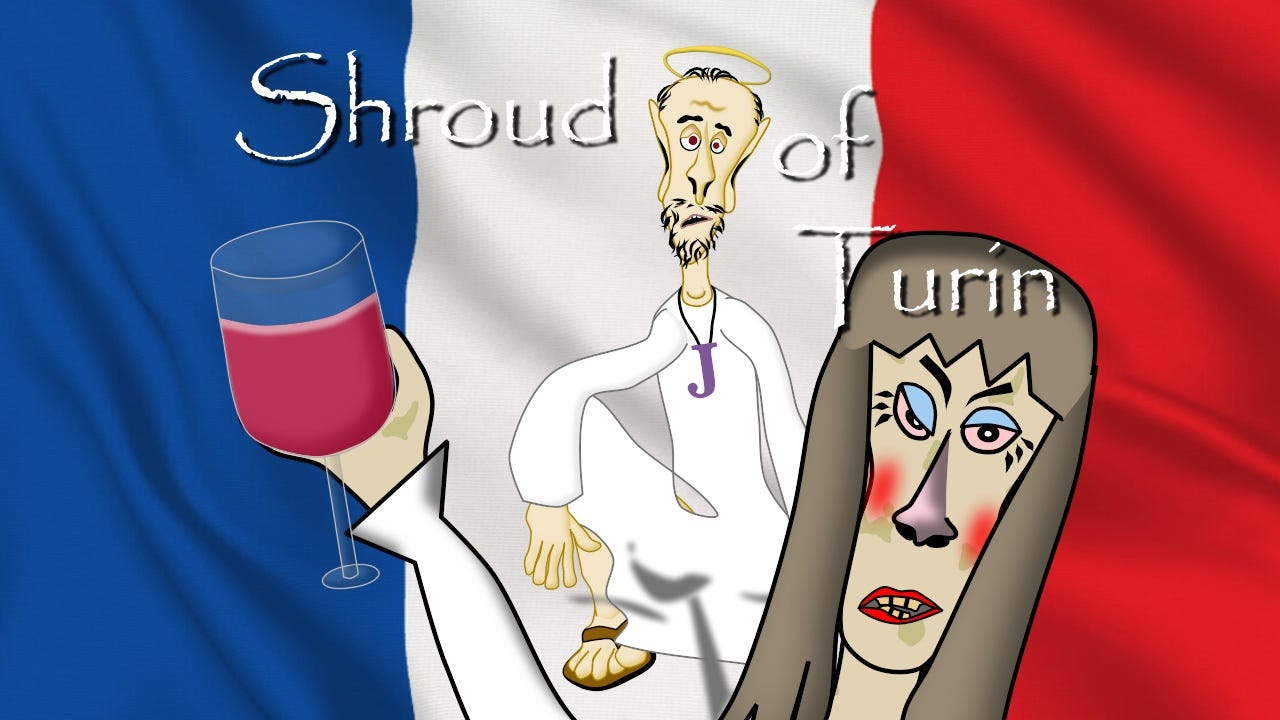
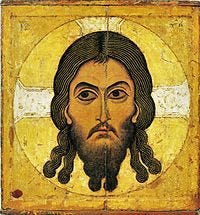

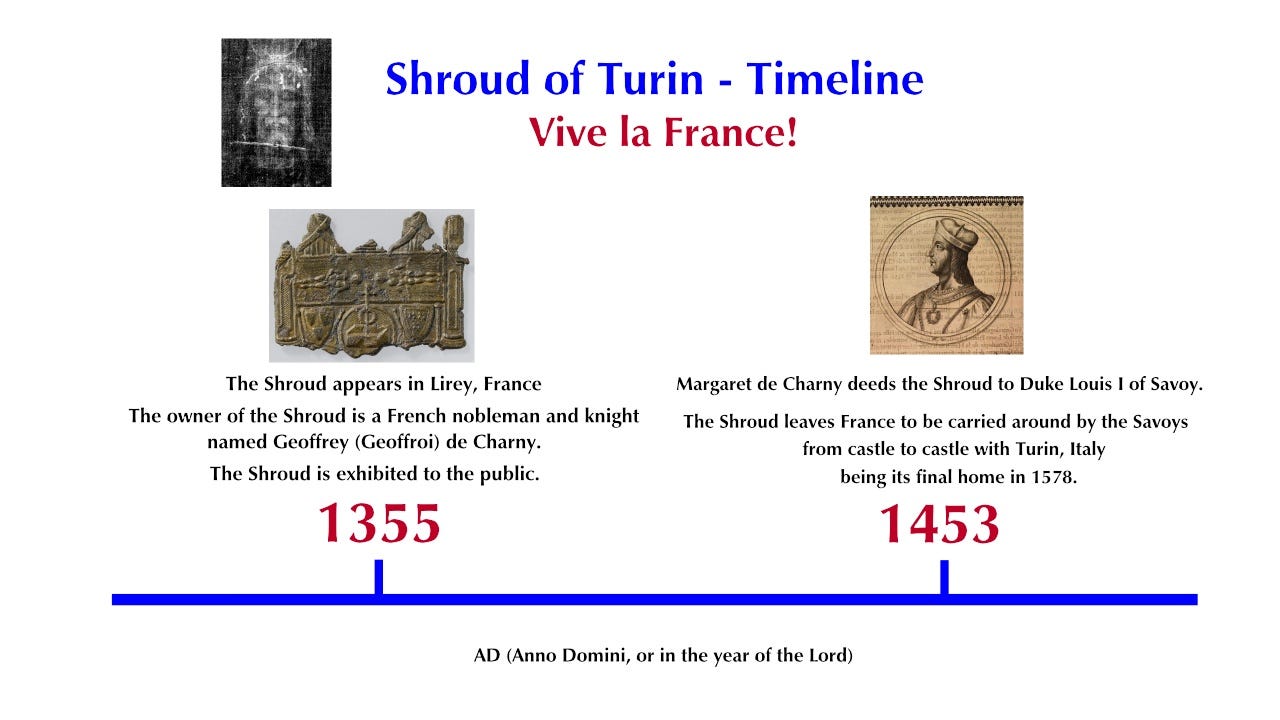
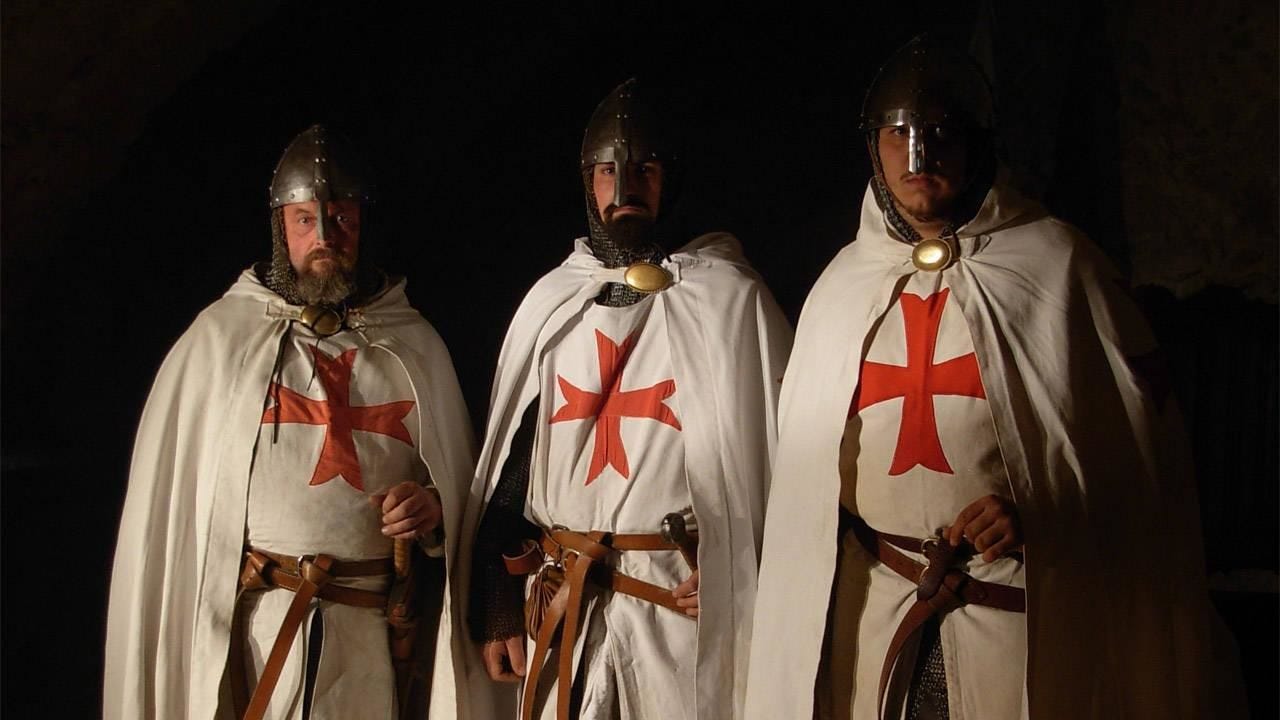

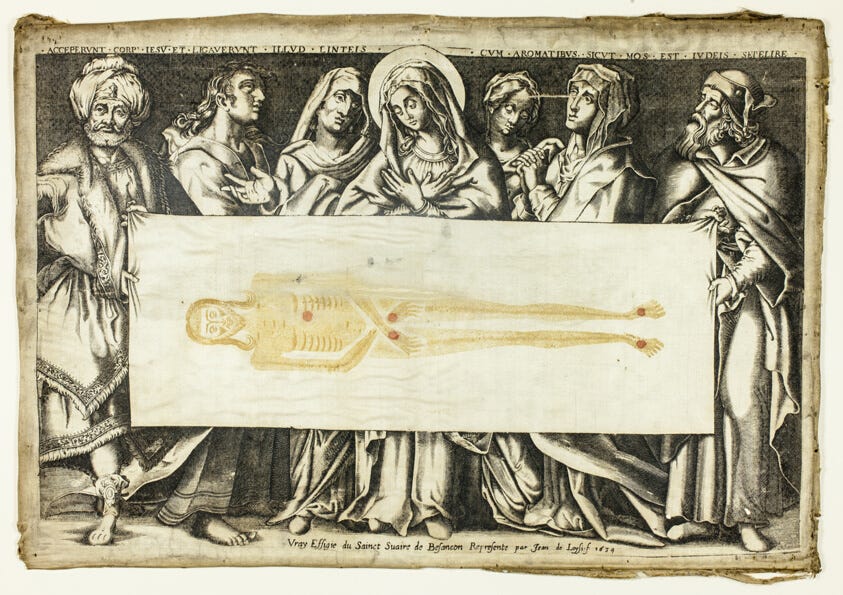

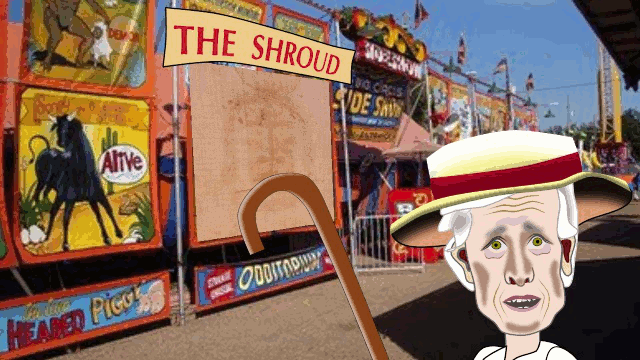
What I find interesting is the medallion with the picture of the shroud. Very detailed for a small metal item. Someone took some time in making that. Also, if the shroud was made in the middle ages why isn't the image made in middle ages' art? Instead it is the only piece of middle ages "art" that shows a realistic, photograph image.
A fascinating account. Thank you.